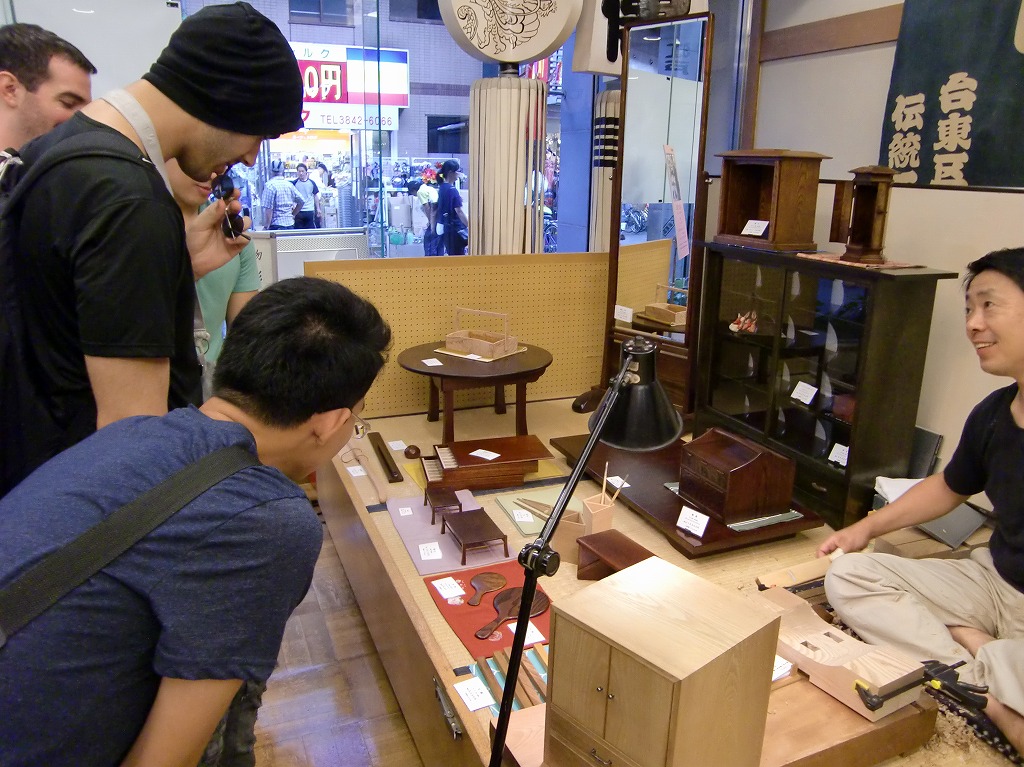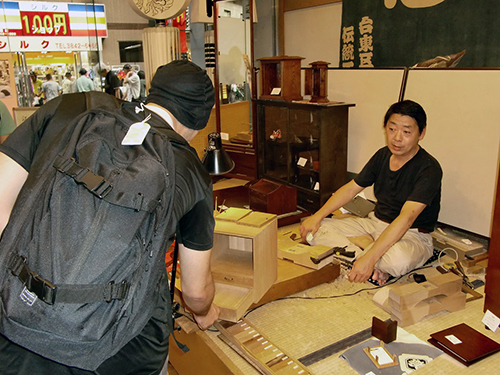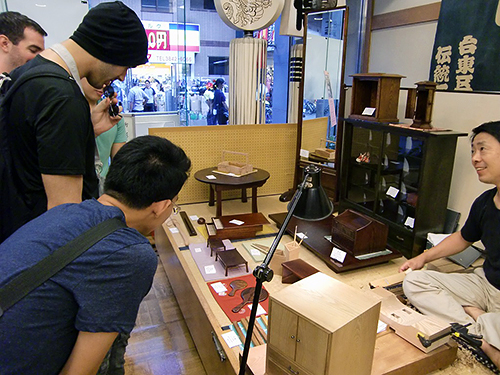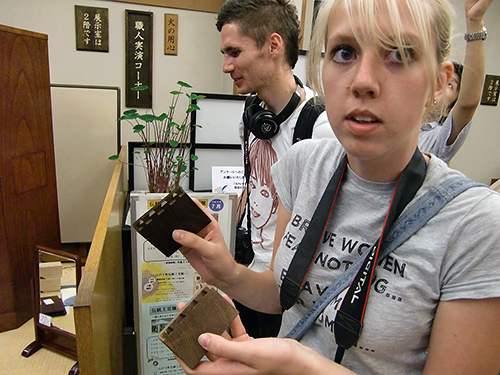
The Intricate Woodworking Craft of Sashimono
In July, our KCP Culture Class had a great opportunity to visit a traditional crafts museum where they met Edo-sashimono craftsmen who showed them their creations.

Japanese woodworking is recognized for its refined techniques for making wooden pieces that are considered high art. Their work is known as sashimono, which literally means “fitted things”.
KCP students with an Edo-sashimono craftsman. | KCP Flickr
The term was used to give importance to the intricate and complex interlocking panels, crosspieces, and stiles. The term “sashimono” typically meant unfinished furniture or pieces of lacquered furniture that showed how they were joined together. Japanese woodworkers tend to group their work based on production technique rather than how a piece was to be used. This says a lot in how Japanese techniques in furniture making developed.

Sashimono is known today as the traditional Japanese craft of making wooden furniture. The term sashimono is from joining two pieces of wood together without the use of nails. Instead, a hidden notch and groove is used to lock the wooden pieces together, a technique called “hozo”.
The craftsman tells his story. | KCP Flickr
In English, this technique translates as joinery. The earliest sashimono technique can be traced back to the Jomon period 14,500 BC to about 300 BC as indicated in the shaft fittings of arrowheads found from that era. Many different styles were used throughout the years in the craft of sashimono since Buddhism came to Japan. The style of “Hako-tsukurii” became popular among nobles, monks, and the Imperial court. This marked the beginnings of sashimono as we now know it.
Two types of sashimono:
Kyo-Sashimono was developed in the culture of the Imperial court and Tea Ceremony. It is formal and elegant in nature.
Edo-Sashimono is simple in design for everyday use by regular Japanese citizens.

The sashimono style makes use of few metal parts, if any. It also uses the “hukiurushi-shiage” technique of coating the pieces of furniture with lacquer more than 10 times. Each piece of furniture is made by only one craftsman.
KCP students view the Edo-sashimono pieces. | KCP Flickr
Today, Edo-Sashimono is considered one of the Traditional Crafts of Japan and is regulated and protected by the Japanese government. Craftsmen have to follow strict conditions imposed by the government to make such wonderful works of art and carry on with the old Japanese sashimono traditions.
